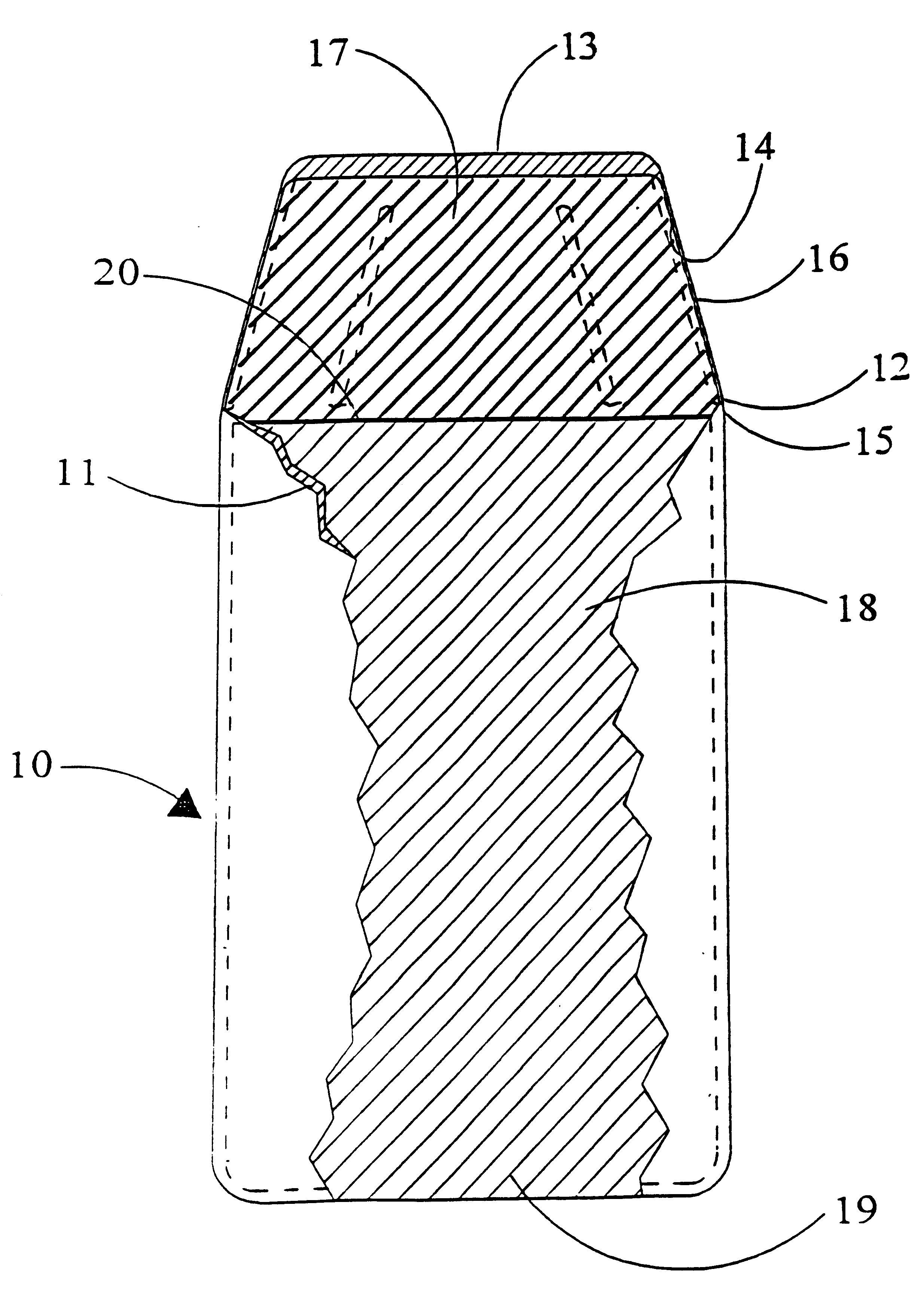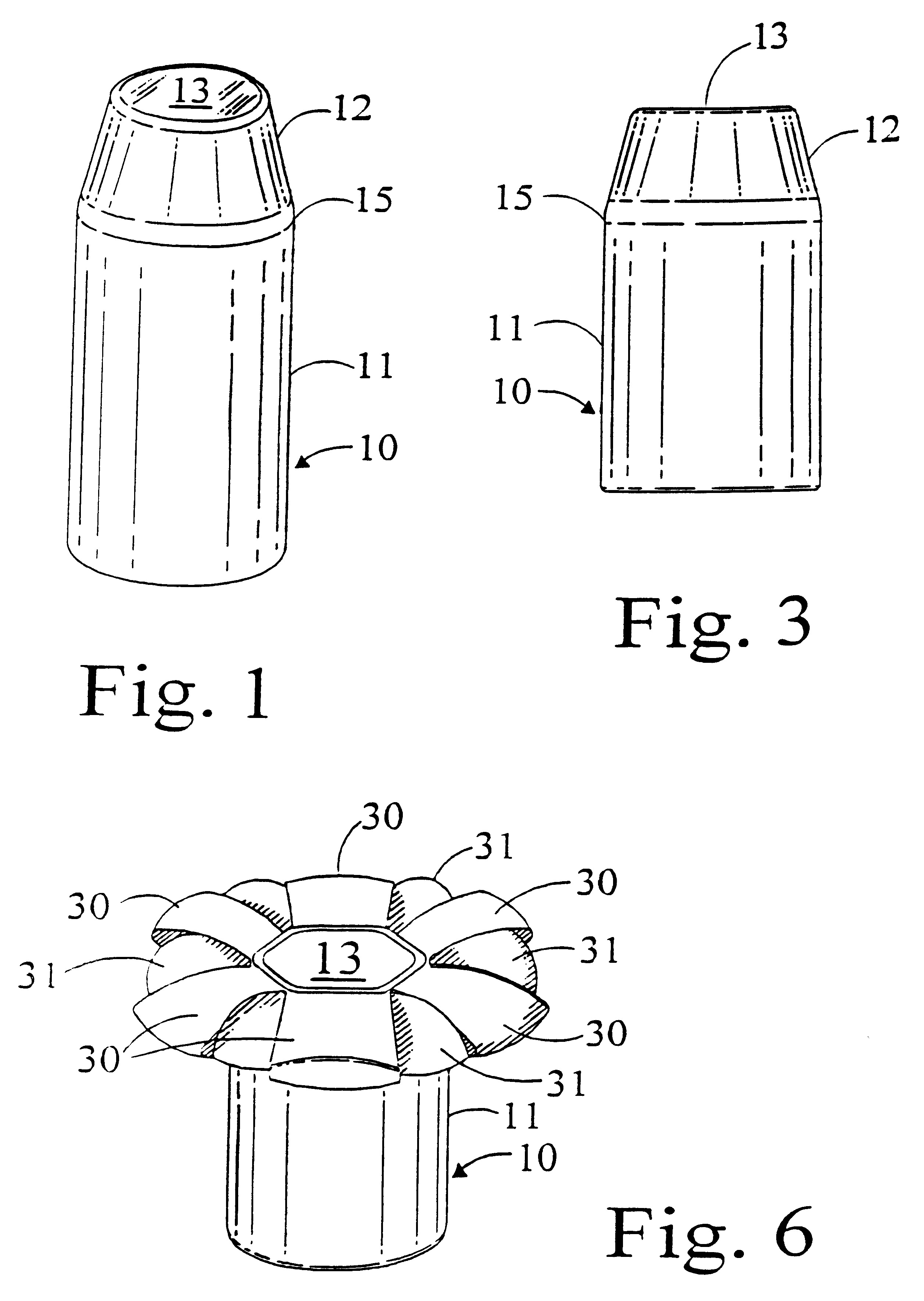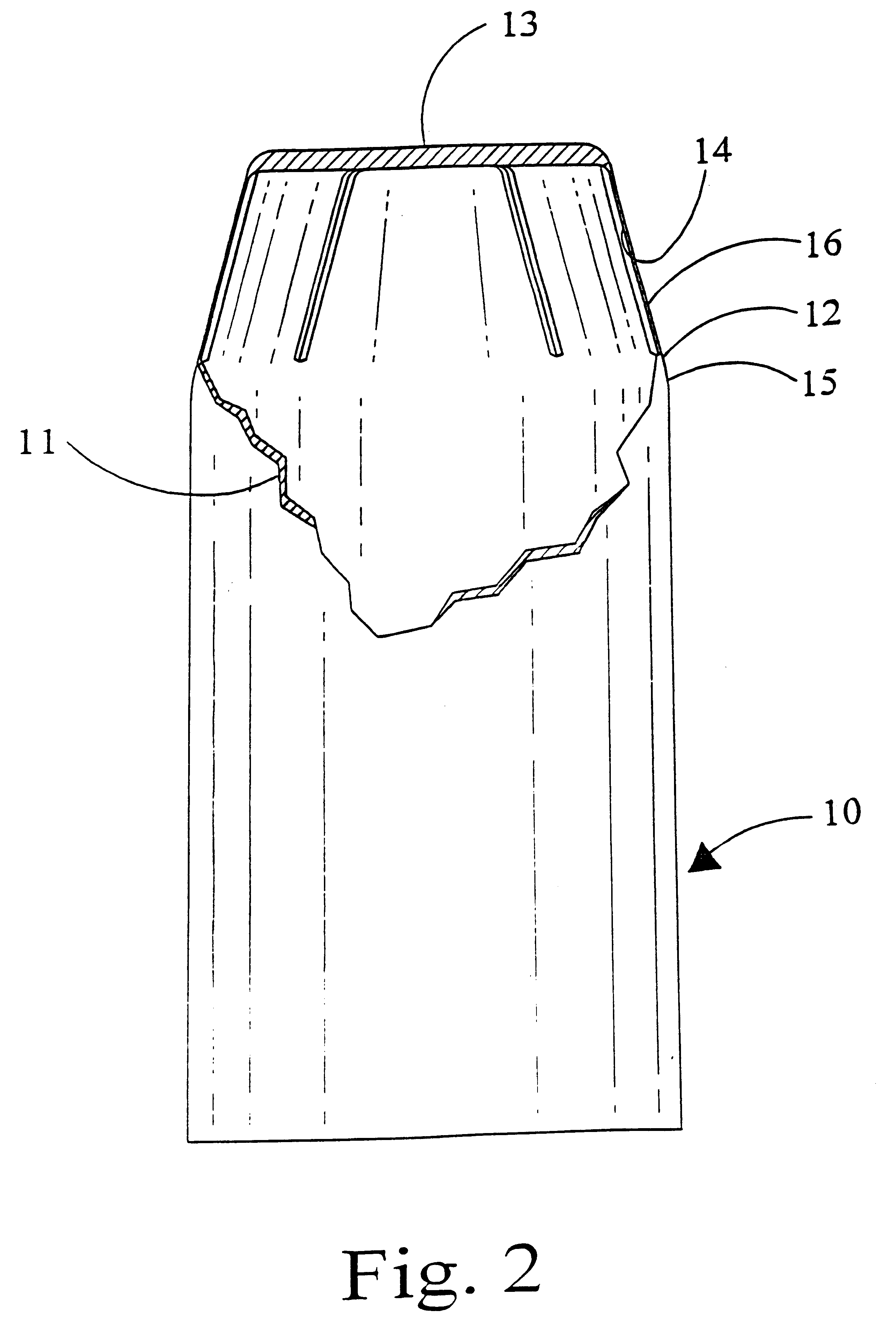Captive soft-point bullet
a technology of soft-point bullets and captors, which is applied in the direction of projectiles, ammunition projectiles, weapons, etc., can solve the problems of low success rate, poor results of hollow-point bullets after passing through dry barriers, and poor results of hollow-point bullets
- Summary
- Abstract
- Description
- Claims
- Application Information
AI Technical Summary
Benefits of technology
Problems solved by technology
Method used
Image
Examples
Embodiment Construction
As described above, a number of variations of our invention are shown in FIGS. 1-9, inclusive. The jackets which are shown are all made of the same or similar material, and the forward end of the scoring may start at the closed end of the bullet or rearward thereof, and may terminate ahead of, at, or rearwardly of the inflection point which is at the rear end of the nose-defining portions. Very narrow slits may be utilized in lieu of or in combination with the scoring. Basically, the narrow slits or the scoring constitute weakened areas of the nose portion of the bullet.
As shown in FIG. 2, the jacket 10 as shown, has cylindrical wall 11 which tapers inwardly in nose-defining wall 12, which in turn terminates in a flat solid end plate 13. Internal scoring 14 extends rearwardly from the flat nose end plate 13 and terminates ahead of the inflection point 15. The scoring 14 which we utilize is deep, so as to leave only a very thin web 16 directly opposite and outwardly of the valley mad...
PUM
 Login to View More
Login to View More Abstract
Description
Claims
Application Information
 Login to View More
Login to View More - R&D
- Intellectual Property
- Life Sciences
- Materials
- Tech Scout
- Unparalleled Data Quality
- Higher Quality Content
- 60% Fewer Hallucinations
Browse by: Latest US Patents, China's latest patents, Technical Efficacy Thesaurus, Application Domain, Technology Topic, Popular Technical Reports.
© 2025 PatSnap. All rights reserved.Legal|Privacy policy|Modern Slavery Act Transparency Statement|Sitemap|About US| Contact US: help@patsnap.com



